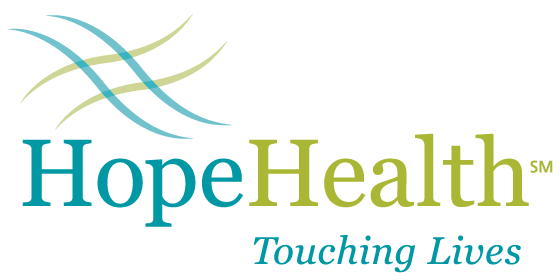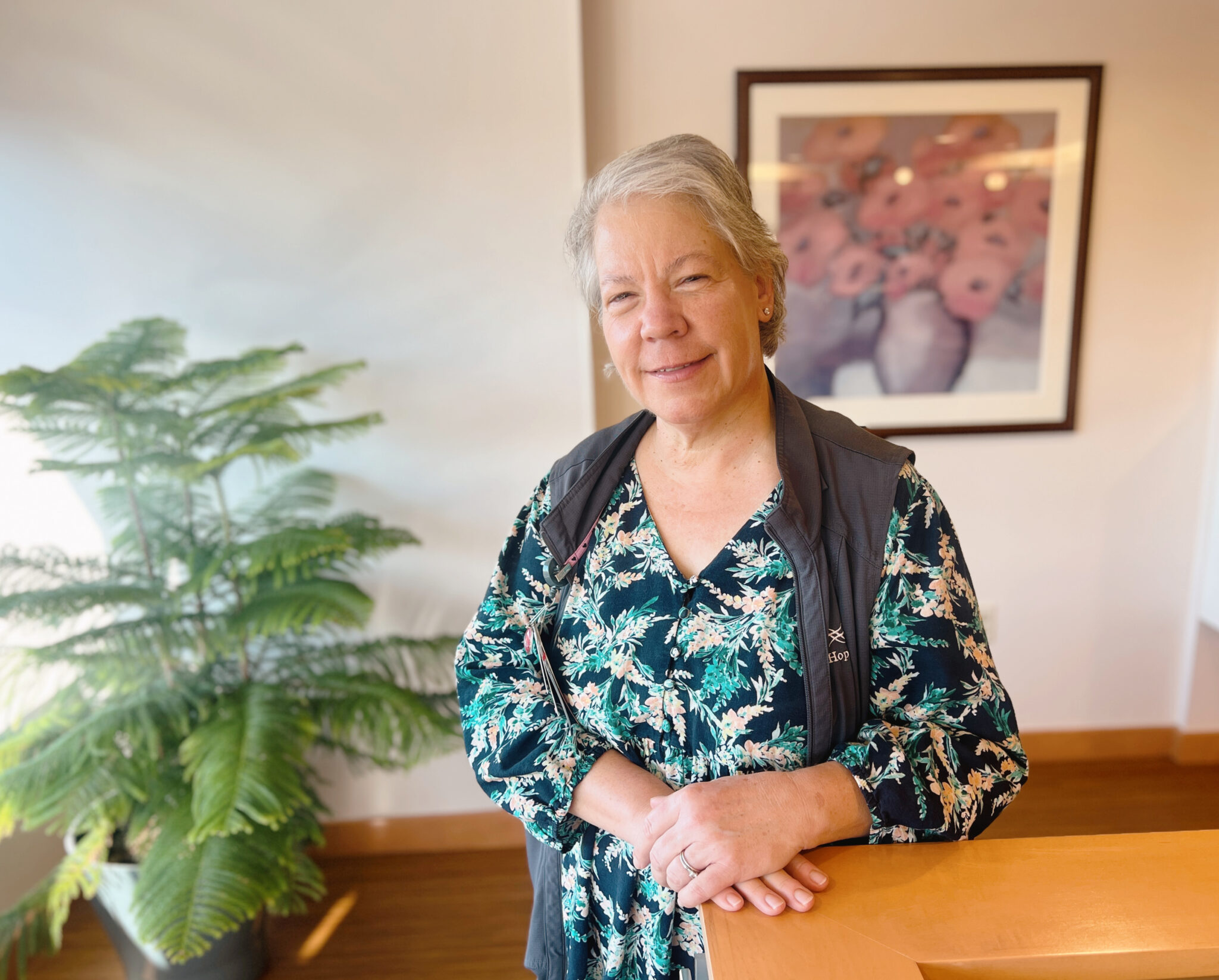Not long ago, as co-pastor at a local church, Christine Foster’s name regularly appeared on the visitors list at the HopeHealth Hulitar Hospice Center. She was there to sit with parishioners from her church, who were navigating complicated end-of-life journeys.
Now, when she walks into the Hulitar Hospice Center, it’s as a team member. She is here as a hospice chaplain, offering spiritual support to patients and families from all backgrounds and beliefs.
She shares her journey to this important role.
> Learn how to get started with hospice care.
When did you know you wanted to work in spiritual care?
Christine: When I was in college, I had a transforming experience around the illness of my best friend, Shelley. Death was staring Shelley in the face. Yet I was seeing her find hope out of hopelessness, and joy in the midst of incredible challenge.
At the time, I was going to be a lawyer. I realized: If I were to die in three years, would I want those years to be law school? The answer, for me, was a clear no. I wanted to teach other people what Shelley taught me: how to find hope out of hopelessness.
I decided to go into ministry.
Ministry is a big field. What were some of the experiences that ultimately brought you to hospice, and HopeHealth?
When I was first studying for ministry, I was also volunteering with a suicide prevention phone line in the San Francisco Bay Area. It was the early years of the AIDS epidemic, and we were getting phone calls from 20-something-year-old men who had just been tested positive for HIV.
I thought about Shelley: How do we find hope in the middle of this? I realized we could sometimes help people mend broken relationships with their families, or if those relationships could not be mended, just be with them in place of their family.
I moved to Philadelphia next, to work as a chaplain in a hospital ICU. I spent a lot of time with families during health crises, and realized how life-transforming those moments can be.
Then I became co-pastor at Providence Presbyterian Church, a very diverse, multicultural congregation. Several parishioners, from many different backgrounds and circumstances, were cared for by HopeHealth, both at the Hulitar Hospice Center and in their homes. I saw what a gift it was for their families. I saw how special the HopeHealth teams were.
When the COVID pandemic started, I could no longer see parishioners in person. I reflected on my time in San Francisco during the AIDS epidemic, and my time in the Philadelphia ICU. I knew how important hospice ministry would be with this new epidemic. I knew I wanted to see people face-to-face, and help facilitate their goodbyes.
So I applied to HopeHealth.
> Checklist: What to look for in a hospice provider
Not everyone identifies with a religion or spirituality. As a hospice chaplain, how do you start the conversation?
My work as a chaplain is to help you remember and connect to whatever is spiritually meaningful for you — whatever spiritual energy has energized your life; wherever you find the sacred.
For example, I’ll sometimes ask patients: What were the meaningful parts of your life? What are you proudest of? The last time you went through a hard time, what helped you cope?
Or I might put it like this: What makes you feel nurtured and grounded? Where do you connect with yourself, and feel like there’s hope in the world?
Here in Rhode Island, patients often talk about the importance of water, the beach, the shore; nature in general. Many, many people find comfort in their relationships with their pets. For others, it’s a passion or hobby like sports or woodworking; it’s the way their spirit is nurtured in certain family relationships.
I really feel that my calling in life is to help people understand that our spiritual connections can go so far beyond what any religious upbringing may have taught us. One of my clergy friends and mentors refers to this as our “sacred intelligence”: There is so much that we do not understand around us that comes into our lives and supports us. But we can recognize it when we find it.
> Related: Knocking on doors: How a silent monk became a hospice chaplain
Once you’ve identified a patient’s spiritual needs, what happens next?
Then we talk about how to translate that into their end-of-life experience, and I advocate to make that happen — from arranging a specific religious rite to having a beloved pet join them in their room. (At the Hulitar Hospice Center, visitors and pets are welcome at any time.)
Often, I also act as a mediator to help patients have these conversations with loved ones. It allows the patient to talk about what’s important and useful to them as they come to the end of life. And it gives family members a chance to take what their loved one appreciated in life, and continue to live it out in their own. That can be so powerful.
Finally, I love what my fellow chaplain Wilson says: A big part of our job is holding space for people — for whatever needs to fill that space, including just being able to sit together in hard situations.
> Related: In the halls of Hulitar: An inpatient hospice nurse opens up
Any closing thoughts?
I used to be a pessimist. Then I met people like Shelley and my husband and many others, who had a joy and appreciation for life that I wanted to find for myself. I studied it in them. I worked on it.
Now, my favorite theological words are hope and joy. I really appreciate how the HopeHealth team works to make those words possible for patients and families — and that I get to be part of it.
Of course, I also love the fact that I am part of an organization with hope in its name.
For hospice information and support, contact us at (844) 671-4673 or Information@HopeHealthCo.org.

